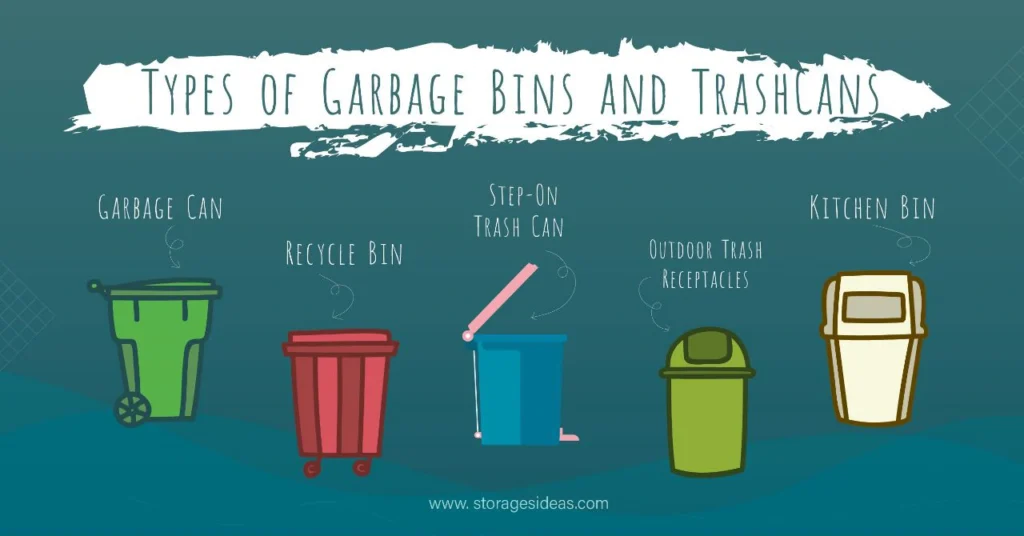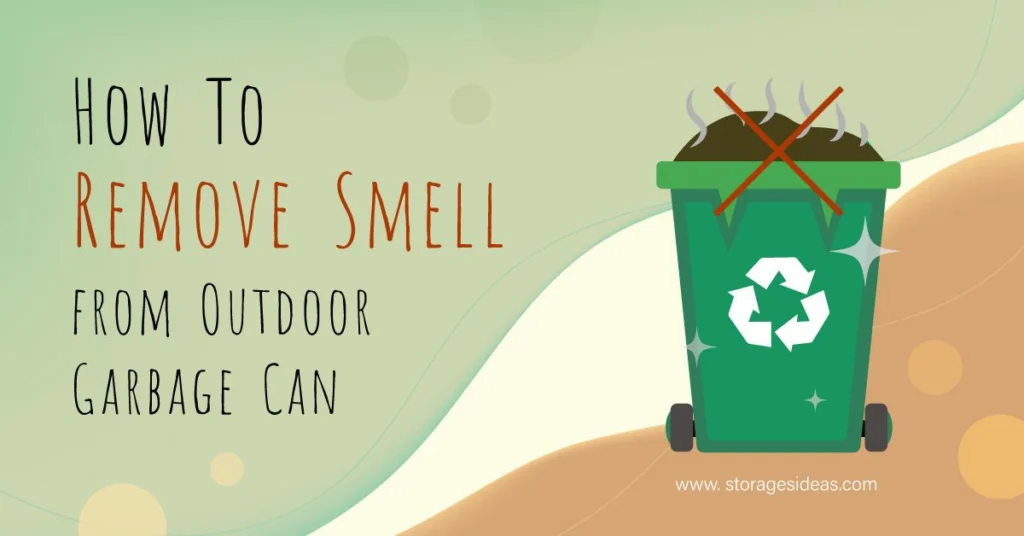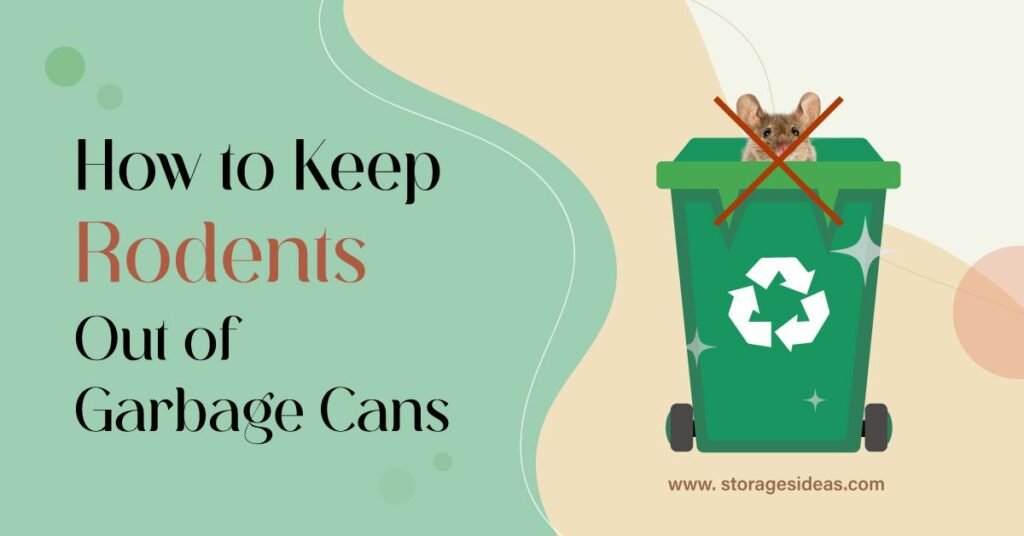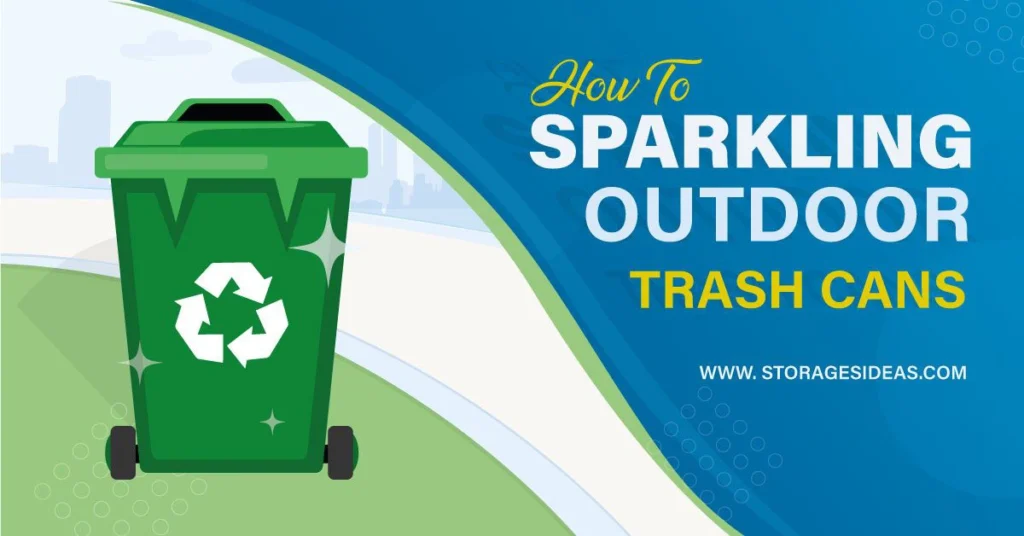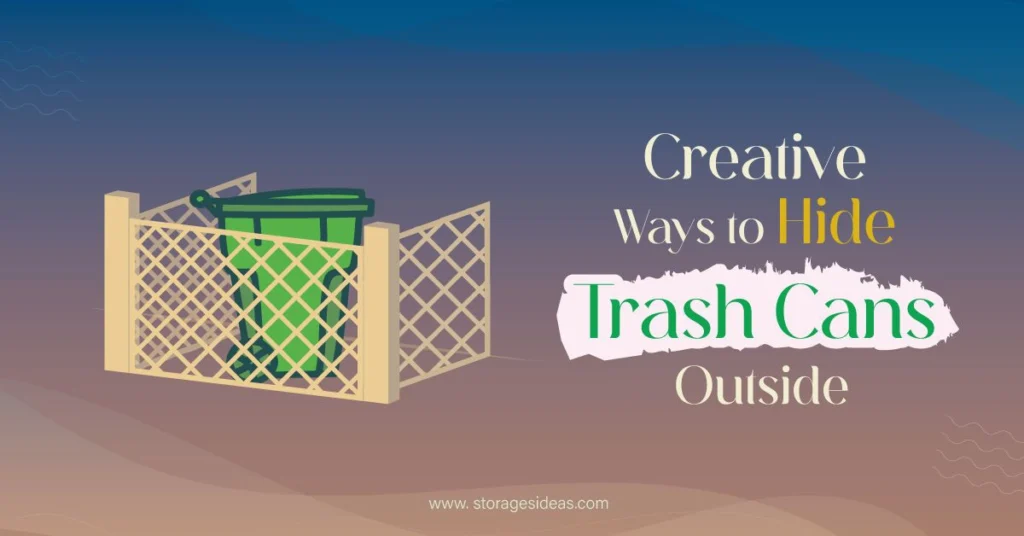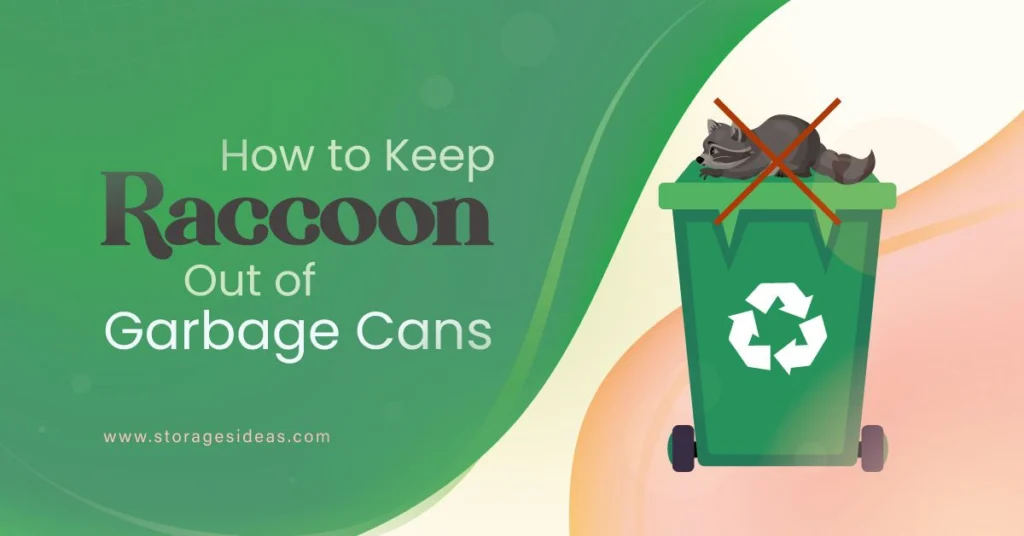“How On Earth Can You Say ‘Dirty Sock’ And ‘Relax’ In the Same Sentence?”
A line quoted by non-other than the infamous Dr Sheldon Cooper from the web series The Big Bang Theory.
Now that I think of it, I also like him regarding germs. So, don’t be surprised by my fascination with the types of garbage bins and trash cans and their importance.
As a germaphobe, I’m always cautious about my surroundings. It’s involuntary, and I don’t know how to stop it. I like things to be in a certain way, but that is actually a fancy way of saying I like things to be clean.
Garbage bins and trash cans are imperative for keeping a house, workplace, or the environment neat and hygienic.
However, there are various types of garbage bins and trash cans, and it’s best to know their importance and how they can contribute to maintaining a healthy environment.
Not all trash cans are suitable for a specific setting. You have more than a few options, and knowing which bins to use in a particular situation is more significant than you can imagine.
Before you get a regular kitchen bin for a medical unit, I suggest you look at all the types of waste bins and cans. Trust me; it’ll save you from making a gigantic mistake.
Types of Garbage Bins
In the following sections, I will explore each type of garbage bin in more detail, uncovering their specific features and benefits to waste management.
Kitchen Bins
Let’s begin with the most common type of garbage bin—the kitchen bin. This is where you dispose of organic waste, such as food scraps, vegetable peels, and coffee grounds. Having a separate bin for your kitchen waste is essential as it helps prevent the growth of foul odors and discourages pests from invading your living space.
Additionally, it allows you to collect organic waste for composting, which can later be used to nourish your garden or potted plants. By separating kitchen waste, you’re taking a small but significant step towards reducing your ecological footprint.
Recycling Bins
Next up, we have recycling bins. These bins are designed specifically for recyclable materials, including paper, cardboard, plastic bottles, glass containers, and aluminum cans.
Recycling is an essential practice that helps conserve natural resources and reduces the amount of waste sent to landfills. In addition, separating recyclable items from regular trash enables them to be processed and transformed into new products.
Familiarizing yourself with local recycling guidelines is essential to correctly sorting the materials. So, the next time you finish a carton of milk or a can of soda, make sure it goes into the recycling bin instead of the regular trash.
Composting Bins
Composting bins are a must-have for anyone passionate about sustainable living. These bins are specifically designed for collecting and composting organic waste, such as fruit and vegetable peels, tea bags, and yard trimmings.
Composting is a natural process that converts organic waste into nutrient-rich soil, known as compost. This compost can be used as a natural fertilizer for plants, promoting healthier growth and reducing the need for chemical-based alternatives.
It reduces waste and helps mitigate greenhouse gas emissions from organic waste in landfills. If you’re a gardening enthusiast or want to impact the environment positively, consider starting your composting bin.
Public Waste Bins
While we’ve covered bins for homes, discussing public waste bins is equally essential. These bins are strategically placed in public areas like parks, streets, and shopping centers to encourage responsible waste disposal.
Public waste bins are usually divided into compartments for different types of waste, such as general waste, recyclables, and sometimes even organic waste.
They are vital in maintaining cleanliness and preventing littering in public spaces. By using these bins correctly and respecting their purpose, you contribute to a cleaner and more attractive environment for everyone to enjoy.
Types of Trash Cans
Garbage bins and trash cans are similar in many ways but not entirely the same. Look at the different categories of trash bins, and you’ll understand how the former differs from the latter.
The Classic Trash Can
The classic trash bin – the one we’re all familiar with. You’ve probably seen it countless times in kitchens, offices, and public spaces. These trusty companions come in various shapes and sizes, typically made of durable plastic or metal. The classic trash bin offers a practical solution for storing and disposing of everyday waste.
One of the great things about the classic trash bin is its versatility. These bins can handle it all, whether you’re throwing away food scraps, paper waste, or packaging materials. In addition, they provide a designated space for your trash, preventing it from cluttering your living or working areas.
Regarding design, classic trash bins offer options for everyone’s preferences. You can find bins in different colors to match your décor or choose sleek and minimalistic designs for a more modern look. Some trash cans even come with compartments or dividers, allowing you to conveniently separate recyclables from general waste.
If you prefer a touch of elegance in your home, you can opt for stylish stainless steel trash cans that blend seamlessly with your interior decor. These bins serve their purpose and add a touch of sophistication to your space.
In addition, stainless steel trash cans are easy to clean and resistant to stains, making them a top choice for many homeowners who want a durable and aesthetically pleasing option.
The Step-On Trash Can
Have you ever struggled with dirty hands while opening a trash can lid? Well, that’s where your handy step-on trash can comes in.
These cleverly designed bins feature a foot pedal or lever that allows you to open the lid without using your hands, minimizing the risk of cross-contamination.
The hands-free operation of step-on trash cans is particularly beneficial in certain environments, such as hospitals, clinics, and kitchens.
In medical spheres, where strict hygiene protocols are crucial, step-on cans help maintain a clean and safe environment.
In addition, they allow healthcare professionals to dispose of waste without compromising their or their patients’ well-being.
The step-on trash can becomes a trustworthy kitchen assistant in the kitchen, where you’re handling food and dealing with messy hands.
Imagine peeling potatoes, chopping vegetables, or handling raw meat – all without touching the lid of your trash can. It’s a simple yet effective way to prevent the spread of bacteria and maintain proper food hygiene.
Moreover, step-on trash cans often have a soft-close lid mechanism, which prevents annoying slamming sounds.
This feature is helpful, especially if you have light sleepers or curious pets at home. The lid gently closes after you release the pedal, ensuring a peaceful, undisturbed environment.
The Sensor-Activated Trash Can
Let’s step into the realm of technology with the sensor-activated trash can, a marvel of modern innovation. These futuristic bins boast motion-sensing technology that detects your presence and automatically opens the lid. It’s like having your own personal waste butler.
Sensor-activated trash cans offer a touchless experience, eliminating the need for physical contact. This is particularly useful when your hands are full or dirty, preventing the transfer of germs and promoting hygiene. Then, simply approach the trash can, and voila! The lid opens like magic.
The infrared sensors in these bins react to motion within a certain range, ensuring seamless and efficient operation.
Some models even have advanced features, such as odor control mechanisms that keep unpleasant smells at bay. This is especially beneficial in areas where odors, such as kitchens or bathrooms, can be a concern.
Another convenient feature of sensor-activated trash cans is the availability of bag liners designed explicitly for them. These liners fit perfectly into the can, quickly securing the trash bag without any messy overhang.
Additionally, some models have voice-activated commands, allowing you to open the lid by simply saying a few words. It’s a fun and futuristic way to make your waste disposal experience even more convenient.
Outdoor Trash Receptacles
While we’ve mostly focused on indoor trash cans, let’s remember the importance of outdoor trash receptacles. These sturdy bins are designed to withstand the elements and handle the higher volume of waste generated in public spaces, parks, and streets.
When you stroll along the sidewalks or relax in a park, you’ll often come across standalone bins that conveniently provide a designated place to dispose of your trash.
These bins are strategically placed to ensure that you can easily find a spot to discard your waste without littering the surroundings.
In areas with high foot traffic, such as shopping centers or event venues, you’ll notice bin clusters that offer a larger capacity to accommodate the needs of many people.
Durability is a key factor when it comes to outdoor trash cans.
These are made using robust materials like galvanized steel or heavy-duty plastic to withstand harsh weather conditions and resist damage from potential vandalism or accidental impacts.
Some outdoor bins even feature secure locking mechanisms to prevent unauthorized access or tampering, ensuring the safety of the stored waste.
By providing accessible and convenient disposal options, outdoor trash cans encourage responsible waste management practices.
In addition, they remind people to dispose of their trash properly, reducing the likelihood of littering.
This keeps the environment clean and visually appealing and helps prevent the attraction of pests and potential health hazards associated with scattered waste.
Furthermore, outdoor trash receptacles often have features that facilitate efficient waste management.
For example, some bins have separate compartments for recyclables and general waste, making it easier for you to contribute to recycling efforts.
Importance of Garbage Bins and Trash Cans
Garbage bins may appear ordinary and often go unnoticed daily. Still, their significance in waste management and environmental conservation cannot be overstated.
Clean and Hygienic Environment
Nobody likes a littered and dirty environment, right? Garbage bins are your partners in maintaining clean and hygienic surroundings. By having easily accessible bins strategically placed in public areas, parks, and streets, we can encourage responsible waste disposal.
When you dispose of waste in the appropriate bins, it not only improves the aesthetics of your surroundings but also reduces the risk of disease transmission.
Plus, keeping waste contained prevents pests and vermin from making themselves at home. So, when you use those bins, you’re not just keeping things tidy but also creating a healthier living environment for everyone.
Resource Conservation
Did you know that garbage bins can contribute to conserving valuable resources? Recycling bins are significant in this regard. When you separate recyclable materials like paper, plastic, glass, and metal and place them in the recycling bin, you take a big step toward resource conservation.
Recycling these materials reduces the need for raw material extraction and energy consumption in manufacturing.
That means fewer trees brought down, less plastic ending up in our oceans, and a smaller carbon footprint. Your simple act of placing items in the recycling bin can make a real difference!
Waste Reduction and Sustainability
Here’s another way garbage bins help: reducing waste and promoting sustainability. Composting bins, for instance, are all about turning food scraps and organic waste into nutrient-rich compost.
When you separate these materials and compost them, you’re diverting waste from landfills and reducing the production of harmful greenhouse gasses.
Plus, your compost can be used as a natural fertilizer, nurturing your plants and reducing the need for chemical alternatives. It’s a win-win for both the environment and your garden!
Efficient Waste Management
Picture this—you’re walking down the street with a piece of trash in your hand. But wait! Where do you put it? That’s where garbage bins come in. They provide convenient and designated spaces for you to dispose of different types of waste.
By using these bins correctly, you’re contributing to efficient waste management. When waste is appropriately segregated into different bins, it becomes easier for waste management authorities to handle and process it effectively.
This organized approach reduces the burden on landfills, promotes recycling, and minimizes the environmental impact of waste accumulation.
Household Waste Management
Trash cans are a fundamental part of managing daily household waste. They provide a convenient and hygienic solution for disposing of various types of waste, including food scraps, packaging, and other non-recyclable materials.
By having trash cans in kitchens, bathrooms, and other areas of the home, households can keep their living spaces clean and organized.
This promotes a healthier environment and prevents waste from accumulating in inappropriate locations.
Workplace Hygiene
Trash cans are crucial in maintaining cleanliness and hygiene in office spaces and workplaces. In addition, they provide employees with a designated place to dispose of waste, such as paper, food wrappers, and other non-recyclable items.
By having readily available trash cans, workplaces can ensure that waste is properly contained and disposed of, creating a clean and comfortable working environment.
Does the Size of a Trash Bin Matter?
There are no specific uses for a garbage bin based on its size. However, the size does come into play in different settings.
If you have a large trash can in a small room, then it might take up a lot of space and make it difficult for you to move around freely. Additionally, it will catch a lot of attention, reducing the aesthetic value of the entire room.
On the other hand, if a garbage bin is too small, then it requires regular emptying. So, suppose you put a mini-size trash can where you need to dispose of waste frequently.
In that case, you have to empty the bins more times than you want to, which can reduce your overall productivity.
Time for some examples. Placing a large trash can in a break room is not the greatest idea, as people don’t make a lot of mess there. So, it will be a good use of space.
On the contrary, if you put a small bin in a cafeteria, then you’ll have to go for a trash run after every 10 minutes. Hence, you would want a trash can to hold a lot of garbage.
Time to Take the Trash Out!
In conclusion, the various types of garbage bins and trash cans are important in waste management, cleanliness, and hygiene for you and your surroundings.
Whether you come across outdoor garbage bins or indoor trash cans, their significance directly affects you. Outdoor garbage bins are designed to withstand the elements, encouraging you to dispose of waste responsibly and preventing littering.
Indoor trash cans facilitate efficient waste sorting and recycling and improve your living and working spaces.
By recognizing the value of these containers and using them responsibly, you can actively contribute to a cleaner environment, reduce waste, and ensure a healthier future for yourself and future generations.

